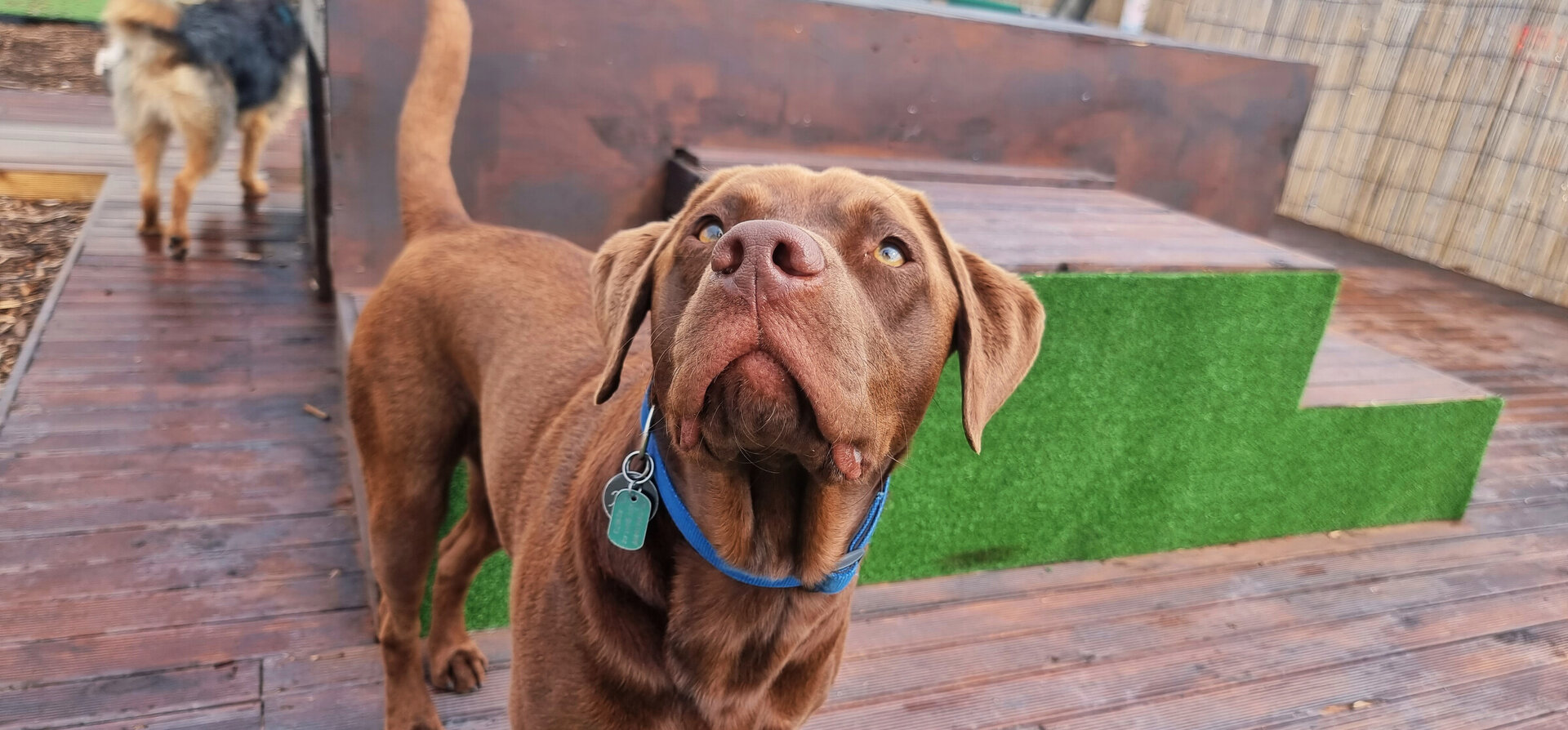How To Tell If Your Dog Has Yeast?
Signs and behavioral changes in dogs that should be considered a red herring include
Excessive chewing or licking of a particular area
Hair between the toes, chest or underbelly turning dark rusty-red
Change in skin color and texture
Hair loss
Foul odor from dog or ears
Hair becoming excessively oily and greasy
Frequent Diarrhea
While yeast is a natural component of the body’s microbiome, an imbalance between beneficial bacteria and yeast can result in Yeast Infections. This imbalance can be caused by various internal or external factors.
Yeast within the digestive tract and on the skin are normally kept in check by beneficial bacteria within the body’s microbiome. These bacteria can become unbalanced or reduced for various reasons which provides the opportunity for yeast to grow.
There are several steps pet owners can take to get yeast infections under control:
DIET MODIFICATIONS
There are several baseline dietary modifications that should be considered when dealing with yeast infections. The largest factor in managing yeast is eliminating any ingredients that feed yeast or trigger inflammation, as well as making sure the diet is balanced.
Avoid Starchy & Sugary Ingredients
Yeast is a component of fermentation. Within this process, yeast uses starches and sugars as an energy source to reproduce. Removing starches and sugars from the diet helps to remove yeast’s primary energy source.
It is recommended to avoid feeding starchy vegetables and fruit when dealing with yeast infections.
Eliminate Trigger Foods
Beyond removing starches and sugars from the diet, other foods may need to be eliminated if they trigger an inflammatory response. Inflammation from food allergies or intolerances can potentially trigger yeast infections.
Allergies and intolerances often vary greatly based on the individual animal, therefore an elimination diet may be necessary to identify and eliminate any problem foods (such as beef, grains and chicken).
Provide a Balanced Diet
Not only is a balanced diet important for overall health, certain essential nutrients can act as antifungals and boost the immune system. Therefore, it is important to make sure the diet is sufficient in all essential nutrients, with special attention to the following:
Essential Fatty Acids: EPA, DHA, LA, & ALA
Essential Fatty Acids are well known to contribute to skin health, as well as helping to maintain a balance of pro-inflammatory and anti-inflammatory compounds. It is important to ensure the diet provides sufficient levels of these nutrients, and that they are balanced in relation to one another.
Zinc & Copper
Studies show that these two minerals can act as anti-fungals. Pet owners should ensure that the diet provides recommended allowances for these minerals, and that they are balanced in a 10:1 ratio (zinc:copper)
Vitamins B6 & B12
In general, the diet should provide sufficient levels of B Vitamins because they are water soluble and the body does not store excess. However, deficiencies in B6 and B12 can affect absorption of zinc and copper.
Magnesium
Magnesium is the third largest mineral component of bones and is known to help inhibit yeast growth.
PROBIOTICS & PREBIOTICS
A pet’s microbiome may become imbalanced for many reasons. Without enough good bacteria to maintain microbial balance, yeast can often bloom out of control. Once proper diet modifications have been made, additional support via probiotics and prebiotics can help re-balance the microbiome.
Probiotics
Probiotics are cultures of beneficial bacteria that can help re-colonize the gut and restore microbial balance. Supplemental probiotics can be useful in getting yeast infections under control.
Commercial Probiotic Supplement
Unfortunately store-bought fermented vegetables like sauerkraut are often too high in sodium to use regularly as a probiotic for pets. If a pet owner does not wish to ferment vegetables at home, then a high quality commercial probiotic would be the alternative. It is important to choose a probiotic that is high quality.
Dairy-Based Probiotics
Probiotics cultured through dairy fermentation such as kefir or yogurt are hit or miss in pets with yeast problems. While some yeasty pets do well with dairy, others do not. Pet owners may want to avoid dairy-based probiotics as it can often make yeast much worse.
Soil-Based Probiotics
Dairy-free probiotics are an ideal choice for yeasty pets. These can be made easily at home by fermenting fibrous vegetables. Using a variety of fibrous veggies in probiotic ferments will produce a variety of bacteria strains and enzymes. Studies show that fermented vegetables can provide much higher CFU’s than over the counter probiotic supplements. Pet owners may want to avoid dairy-based probiotics as it can often make yeast much worse.
Prebiotic Fiber
Supplemental probiotics will also need a food source in the form of prebiotics. “Feeding” the probiotics with prebiotic fiber will give the beneficial bacteria a chance to multiply and colonize the gut. Dandelion greens are especially beneficial for prebiotic fiber, however leafy green vegetables in general will supply appropriate fiber.
Fiber Supplement Cautions
Inulin is often recommended as a prebiotic, however inulin can be fructose based. Since yeast typically feeds off of sugars, inulin may make yeast worse. In these cases, Psyllium Husk is another alternative.
TOPICAL SUPPORT
Yeast infections can be an internal issue as well as an external one. It often spreads to the skin in moist areas, folds of skin, wounds, areas of excessive grooming, and on areas that are in contact with allergens such as the feet. There are several techniques that pet owners can use to provide relief and topical control.
Reduce Excessive Grooming
Itchiness is often a problem with yeasty pets, which can lead to over-grooming. This in turn can create moist areas for yeast to continue growing, ultimately creating a vicious cycle. Once the root cause has been addressed through diet or environmental modifications, it is then useful to reduce excessive grooming to break the cycle. Using positive training methods to teach impulse control gives the owner the ability to manage their dog’s excessively licking. In addition, physical barriers such as socks, booties, and shirts can help prevent pets from over-grooming.
Topical Rinses
Epsom salts, Povidone Iodine, and Green tea rinses are great options for soothing soaks to combat yeast. It is not recommended to use anti-bacterial soaps and shampoos as they will strip away the remaining beneficial bacteria on the skin. Make sure to thoroughly dry the skin after any baths or rinses.
Drying Powders
It is helpful to remove excess moisture from moist, yeasty areas of the skin. Grapefruit Seed Extract Powder and French Green Clay both have antimicrobial and antifungal properties, as well as absorbing moisture from affected areas.
Reduce Exposure to Environmental Allergies
It is helpful to manage and reduce pets exposure to environmental allergens as much as possible. When pets come in contact with an allergen, the body activates a histamine response which then leads to itchiness. An itchy pet will often resort to scratching and licking which sets the stage for yeast to grow. It often helps to reduce exposure to allergens whenever possible, and rinse off the pet if exposure has occurred. Protective clothing such as booties and shirts can be helpful in these situations as well.



